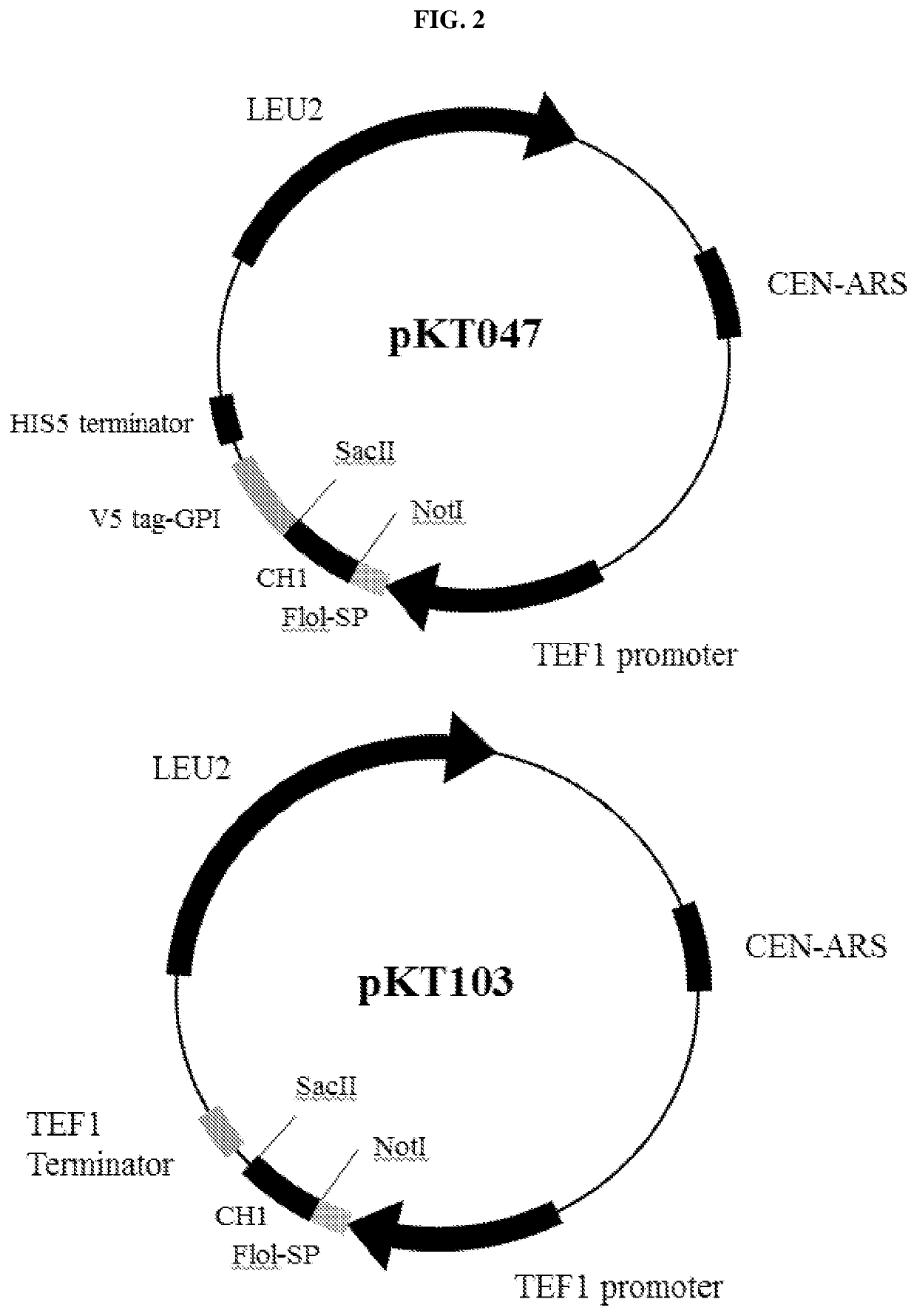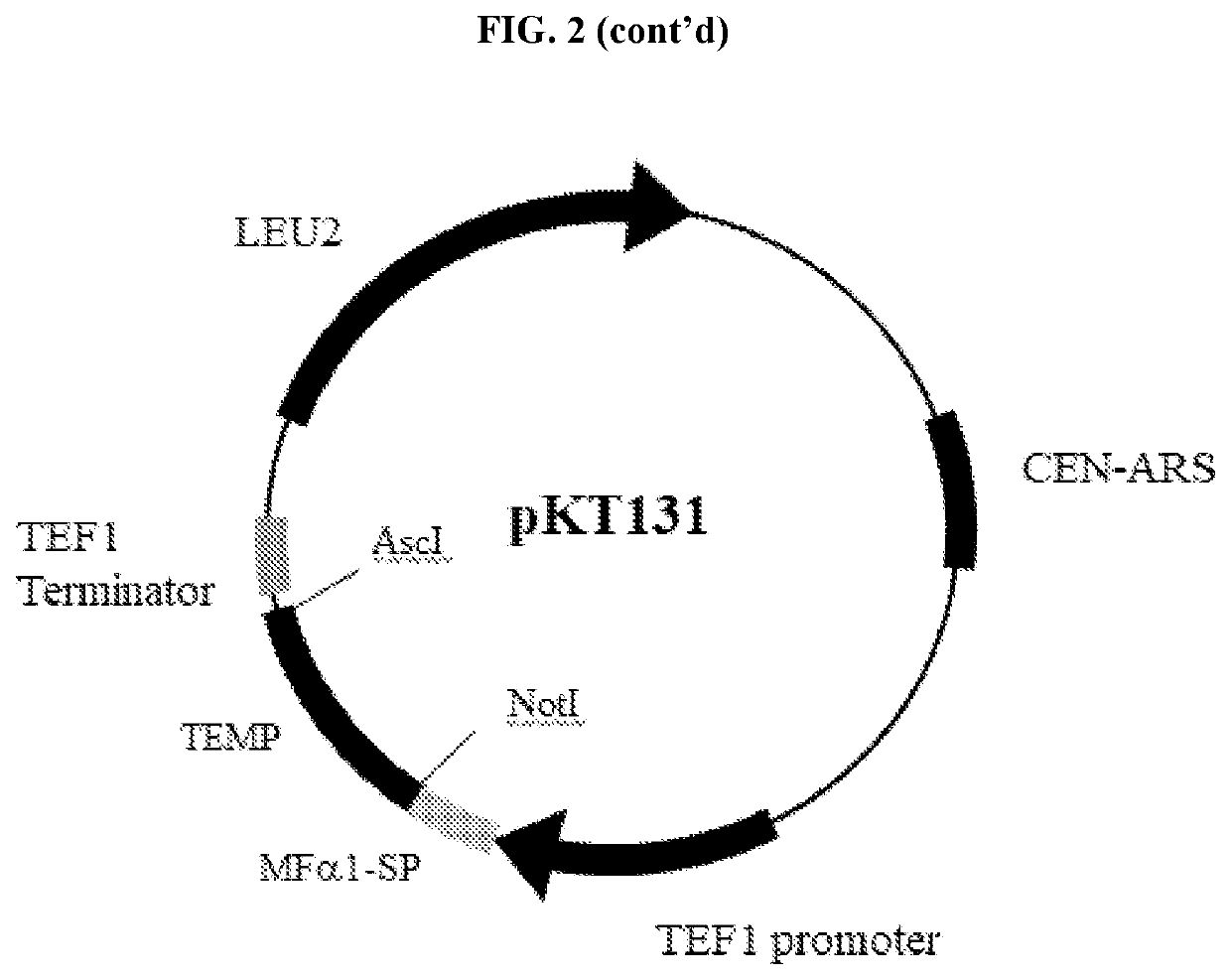A yeast phenotypic screening method for isolation of functional antibodies against g-protein coupled receptors
a functional antibody and yeast technology, applied in the field of biotechnology, can solve the problems of customarily complex target validation studies, protracted and expensive small molecule compounds, and each of these approaches has its own advantages and limitations, and none of them is universally applicabl
- Summary
- Abstract
- Description
- Claims
- Application Information
AI Technical Summary
Benefits of technology
Problems solved by technology
Method used
Image
Examples
example 1
[0112]Brief Overview of the Platform
[0113]The platform illustrated in FIG. 1 is a typical phenotypic screen based on autocrine signaling. The agonist antibody from a combinatorial antibody library, which is introduced into the cell by high efficiency transformation, is produced and secreted into the periplasmic space between cell wall and the plasma membrane where it or a significant portion of it is retained due to its size. When the antibody finds its epitope on the receptor (Ste2p or a human GPCR receptor), it binds to the receptor and activates it, and triggers a cascade of kinase reactions which activate the Ste12p transcription factor at the end of the kinase cascade. The activated Ste12p then binds to the promoter region of a group of pheromone-inducible genes and stimulates their transcription. The promoters of two of such genes, FUS2 and FIG1, were chosen to drive the expression of reporter genes, CDC26 and the antibiotic resistance genes (the neomycin resistance gene, neoR...
example 2
[0114]Construction of Library, Vectors and Host Strains
[0115]The scFv repertoire was first made in a common shuttle vector pRS315 at the diversity of >1010, which is comparable to, or better than, most of the phage display antibody libraries. Sequence analysis of randomly chosen library clones indicated that >80% of the library members contained antibody sequences that were correctly assembled into the vector. When a screen was performed, the repertoire was introduced into the screening cells by PCR and gap-repair with the screening vector pKT103. In the process, the scFv fragments were joined to the FLO1 secretion signal sequence and placed under the TEF1 promoter.
[0116]To construct the strains suitable for the purpose of this platform, some modifications to the Ste2p signaling pathway have to be made. First, like in other experiments in which the yeast pheromone signaling pathway was adopted for studies of heterologous GPCRs, two gene deletions, far1Δ and sst2Δ, were necessary for...
example 3
[0118]Agonistic Antibodies Against Ste2p
[0119]The platform was firstly used to search for antibodies that were able to act as agonists for Ste2p, the yeast GPCR receptor. YKT099 was transformed with the scFv library and the transformed cells were spread on SC-Leu plates (to select for the plasmid) which also contained G418 at 20-40 μg / ml or 300-400 μg / ml, and were incubated at 37° C. or 30° C., respectively. The “high temperature / low drug” selection condition was biased towards the CDC26 expression and the “low temperature / high drug” condition interrogated mainly the neoR expression. The colonies that grew up on the plates under each selection regimen were collected and pooled together with each pool containing 10 or so individual colonies. Plasmids were extracted from pooled cells and used again to transform YKT099. This time, the transformants were screened with a reversed selection protocol. For example, if the first round of screening used the high temperature / low drug selection...
PUM
| Property | Measurement | Unit |
|---|---|---|
| temperature | aaaaa | aaaaa |
| concentrations | aaaaa | aaaaa |
| concentrations | aaaaa | aaaaa |
Abstract
Description
Claims
Application Information
 Login to View More
Login to View More - R&D
- Intellectual Property
- Life Sciences
- Materials
- Tech Scout
- Unparalleled Data Quality
- Higher Quality Content
- 60% Fewer Hallucinations
Browse by: Latest US Patents, China's latest patents, Technical Efficacy Thesaurus, Application Domain, Technology Topic, Popular Technical Reports.
© 2025 PatSnap. All rights reserved.Legal|Privacy policy|Modern Slavery Act Transparency Statement|Sitemap|About US| Contact US: help@patsnap.com



